Welcome to the inspiring world of open shelving, where style meets functionality in the most delightful way. Whether you’re a novice dipping your toes into the design waters or a seasoned decorator with a keen eye for detail, “Top 12 Open Shelving Design Ideas” is your gateway to transforming any room into a masterpiece of creativity and order. This guide offers a curated collection of ideas that will elevate your space, providing you with both the inspiration and the practical know-how to make your vision come to life.
Incorporating open shelving into your home is not just about aesthetics; it’s about crafting a space that reflects your personality and meets your everyday needs. With our expert tips, you’ll discover the joy of showcasing your favorite items while cleverly maximizing storage. By the end of this guide, you’ll have the confidence to transform your home, making it a true reflection of your style and ingenuity. Get ready to unleash your inner designer and enjoy the satisfying rewards of a beautifully curated space!
Layered Display Techniques (Dynamic Visual Interest)
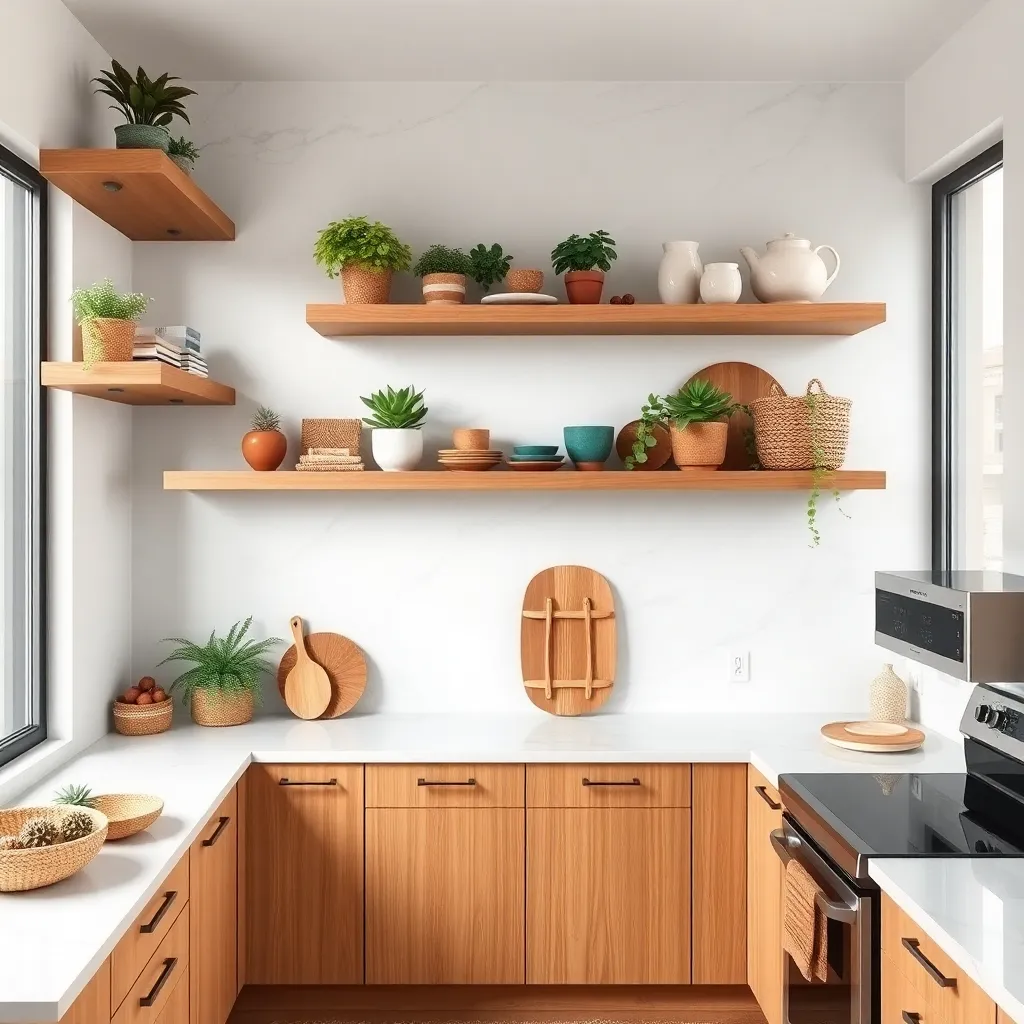
To create a visually appealing open shelving display, start by layering different textures and materials. Mix wooden elements with glass or ceramic pieces to introduce depth and contrast, which will draw the eye and make the space feel curated.
Consider the height and scale of your items when arranging them on the shelves. Taller objects, such as vases or framed photos, should be placed towards the back, while smaller decorative items can be layered in front to create a sense of depth.
Varying the shapes and forms of objects adds a dynamic visual interest that keeps the display engaging. For instance, pairing round bowls with rectangular books or angular sculptures can enhance the overall aesthetic and prevent the arrangement from looking static.
Color can be a powerful tool in layered displays, so use it to create harmony or contrast within your color scheme. Consider using a palette of three complementary colors to maintain cohesion, while occasionally adding a bold accent piece to capture attention and add vibrancy.
Color-Coded Organization (Effortless Style Coordination)
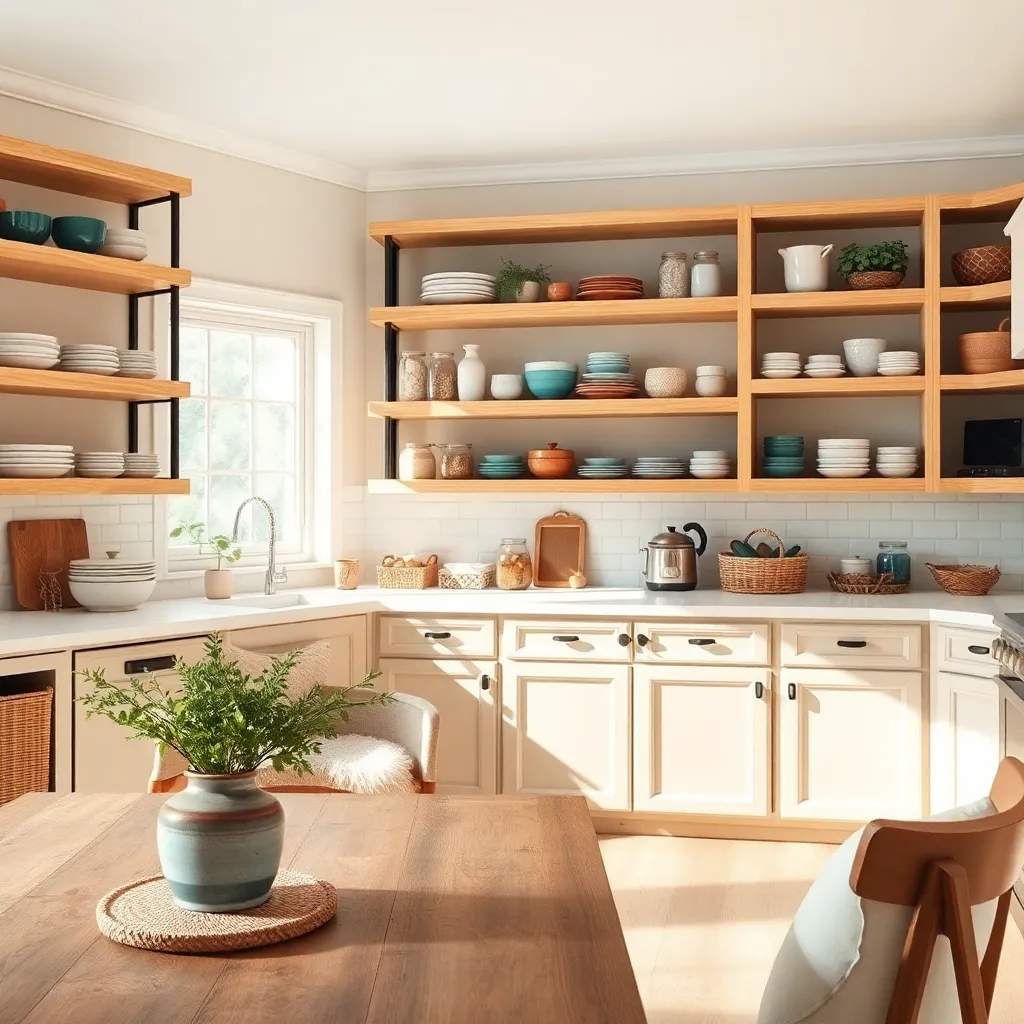
Organizing your open shelves by color can transform chaos into a visually pleasing display. Start by grouping items of similar shades together, creating a cohesive look that feels intentional and stylish.
To achieve a balanced effect, consider the placement of each color group. Alternate between light and dark hues to maintain visual interest, preventing the display from becoming too heavy on one side.
For beginners, begin with primary colors or simple shades like pastels and neutrals, as they are easier to match and mix. More advanced decorators might experiment by introducing accent colors through decorative objects like vases or books, enhancing the overall palette.
Incorporate a variety of textures within the same color family to add depth and dimension to your shelves. Opt for materials like glass, ceramics, and woven baskets to create a dynamic yet harmonious arrangement that feels curated and personal.
Curated Book Collections (Personalized Touch)
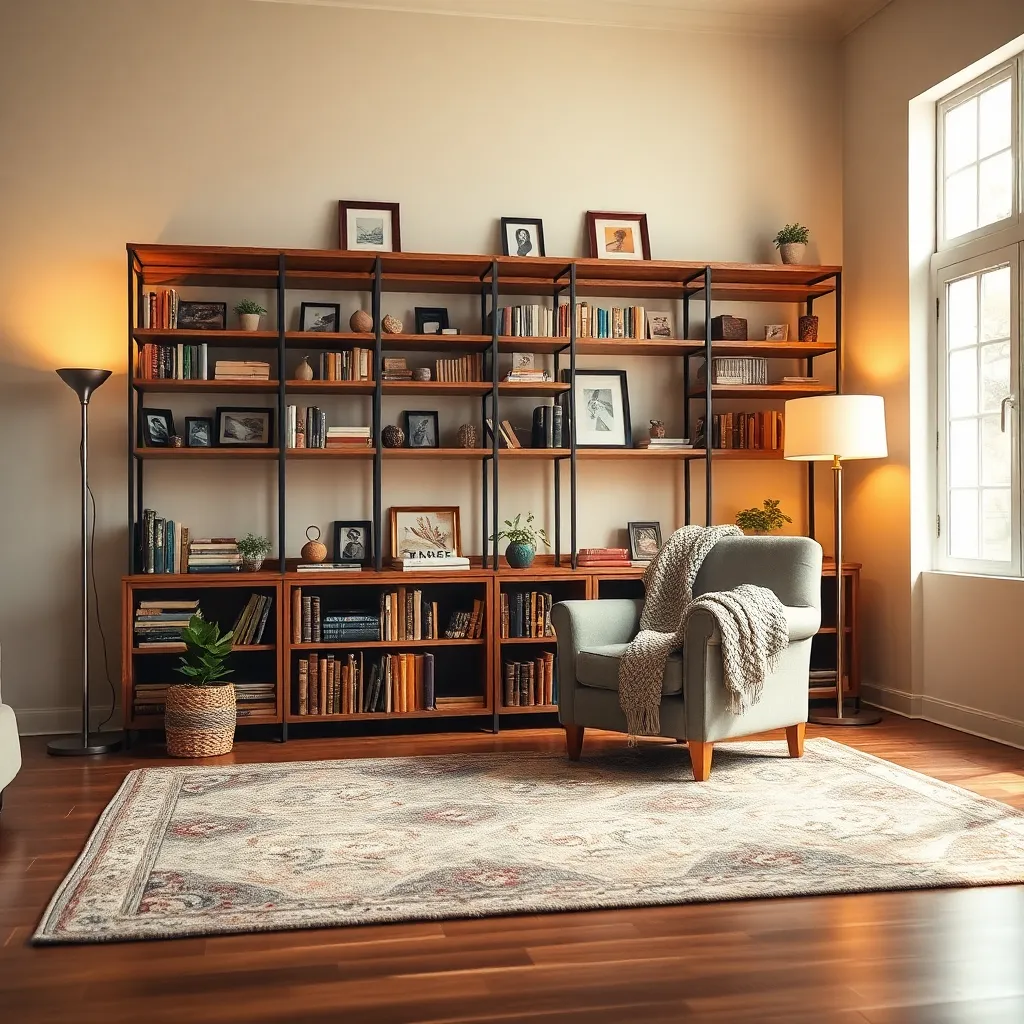
Creating a curated book collection on your open shelves adds a personalized touch that reflects your interests and hobbies. Start by selecting books that not only have meaningful content to you but also feature appealing spine designs that contribute to the room’s aesthetic.
For beginners, aim to balance color and size by arranging books vertically and horizontally to create visual interest. Advanced decorators can experiment with layering techniques, such as placing smaller decorative items on top of horizontal book stacks for added dimension.
Consider incorporating elements that resonate with your personal style. This could include mixing in vintage books for a classic feel or adding modern art books for a contemporary vibe, ensuring that your collection remains cohesive with your overall design theme.
To elevate the look, ensure your shelves have adequate lighting to highlight your curated collection. Installing LED strip lights or using small table lamps can bring focus to your books and create a warm, inviting atmosphere in your space.
Artful Plant Arrangements (Natural Vibrancy)
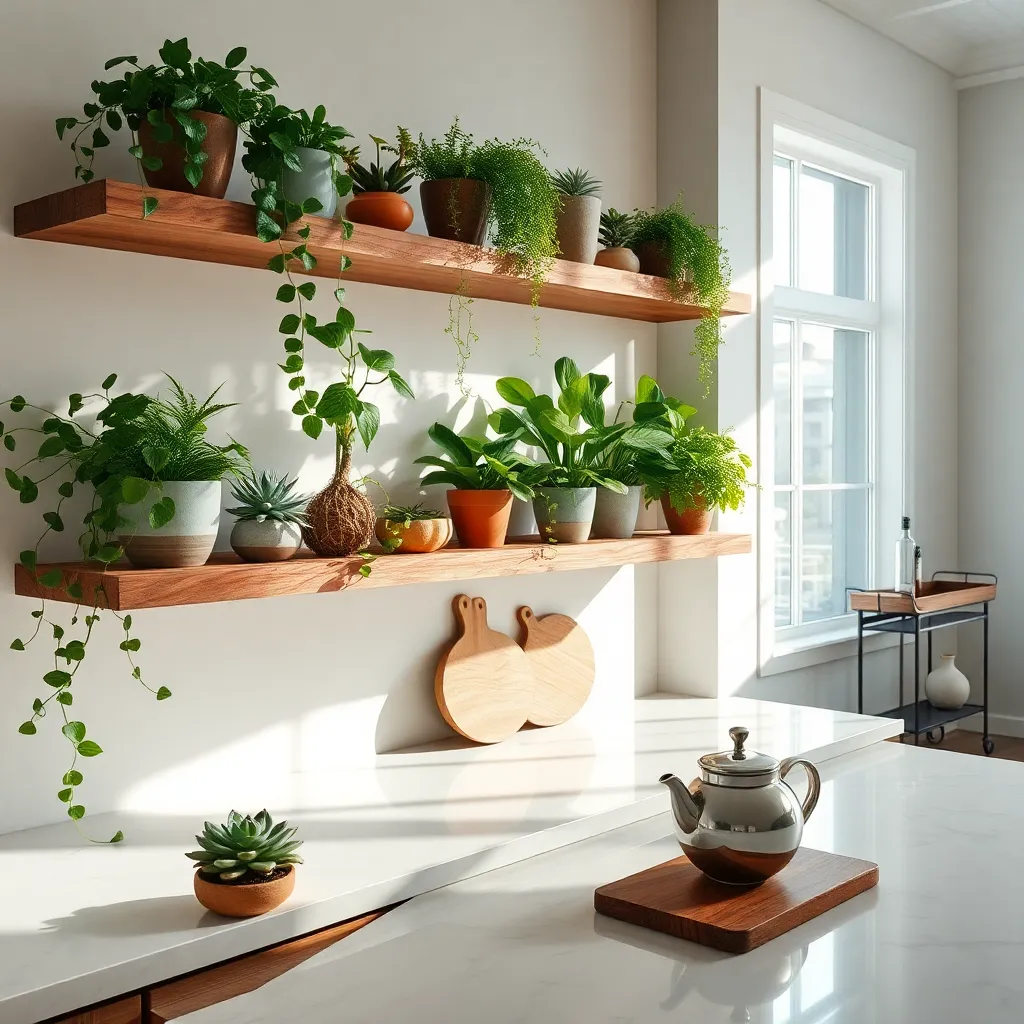
To infuse natural vibrancy into your open shelves, consider integrating a variety of plant arrangements that bring life and color to the space. Opt for a mix of sizes and types—such as trailing vines, small succulents, and larger leafy plants—to create an engaging visual dynamic.
Position plants strategically to ensure they receive adequate light, as most will thrive with indirect sunlight. For beginners, consider low-maintenance options like pothos or snake plants, which are forgiving and add a lush touch without demanding constant attention.
Experiment with different planter materials and colors to complement your existing decor. Concrete and ceramic pots offer a modern aesthetic, while woven baskets can introduce a cozy, rustic feel.
Advanced decorators might explore vertical plant arrangements or tiered plant stands to maximize space and create a layered effect. Consider using clear glass containers for air plants or terrariums, adding an element of transparency and intrigue to your display.
Accent Lighting Installations (Highlighting Key Features)
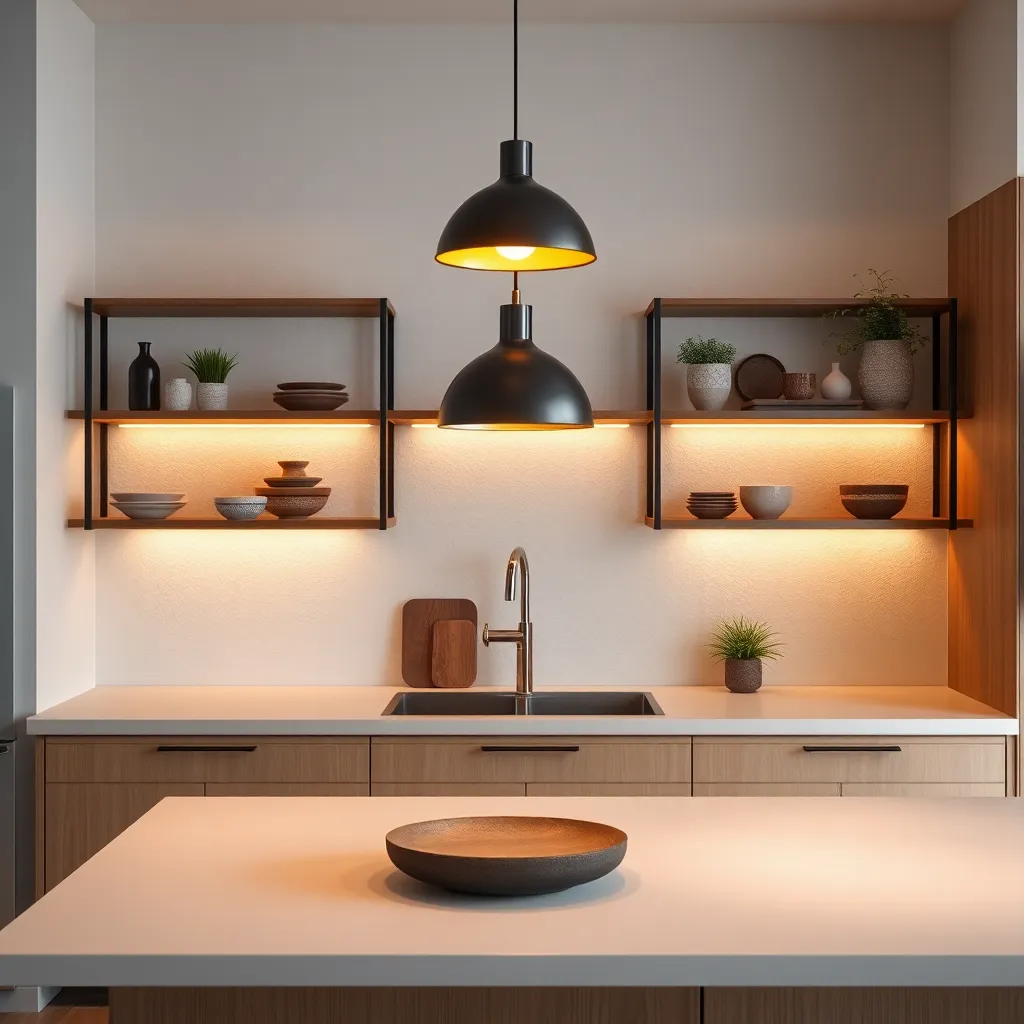
Accent lighting installations can transform your open shelving from a simple storage solution into a standout design feature. By using LED strip lights, you can create a warm glow that highlights your favorite items, adding depth and interest to your shelves.
Consider placing lights under each shelf to create an even illumination that emphasizes the textures and colors of your displayed objects. For a more dramatic effect, install puck lights above larger pieces or artful arrangements to create focal points that draw the eye.
For those seeking a more advanced approach, integrating smart lighting systems allows you to change the light intensity and color to suit different moods and times of day. This flexibility can personalize your space, offering a dynamic element to your shelving that can be easily adjusted.
When selecting lighting options, opt for LED lights in warm white tones for a cozy, inviting atmosphere. Ensure the lighting fixtures are discreet to maintain the clean lines of your shelving, keeping the focus on the items displayed rather than the lighting apparatus itself.
Transparent Shelves (Illusion of Space)
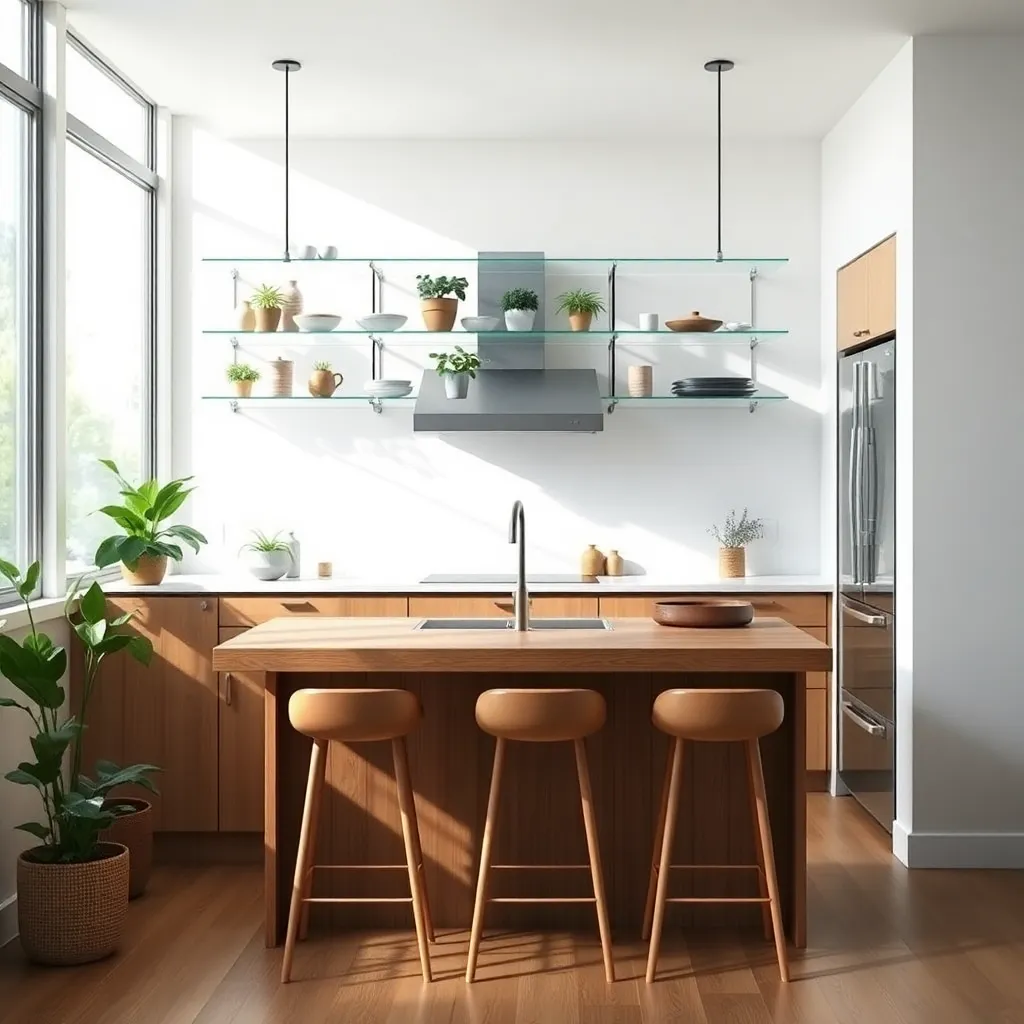
Transparent shelves are a brilliant way to create an illusion of more space in any room. They seamlessly blend with your existing decor, allowing light to pass through and making the area feel larger and more open.
Consider using materials like glass or acrylic for these shelves to maintain a sleek, modern look. Glass shelves can be tempered for extra durability, making them a safe option for homes with children or pets.
When placing transparent shelves, aim for an arrangement that maximizes natural light. Position them near windows or use them to flank a feature wall to enhance the feeling of spaciousness.
For those looking to add a touch of color, choose items with bold hues to display on your transparent shelves. This will create a striking contrast against the clear material, drawing the eye and adding interest without overwhelming the space.
Minimalist Styling (Clean and Clutter-Free)
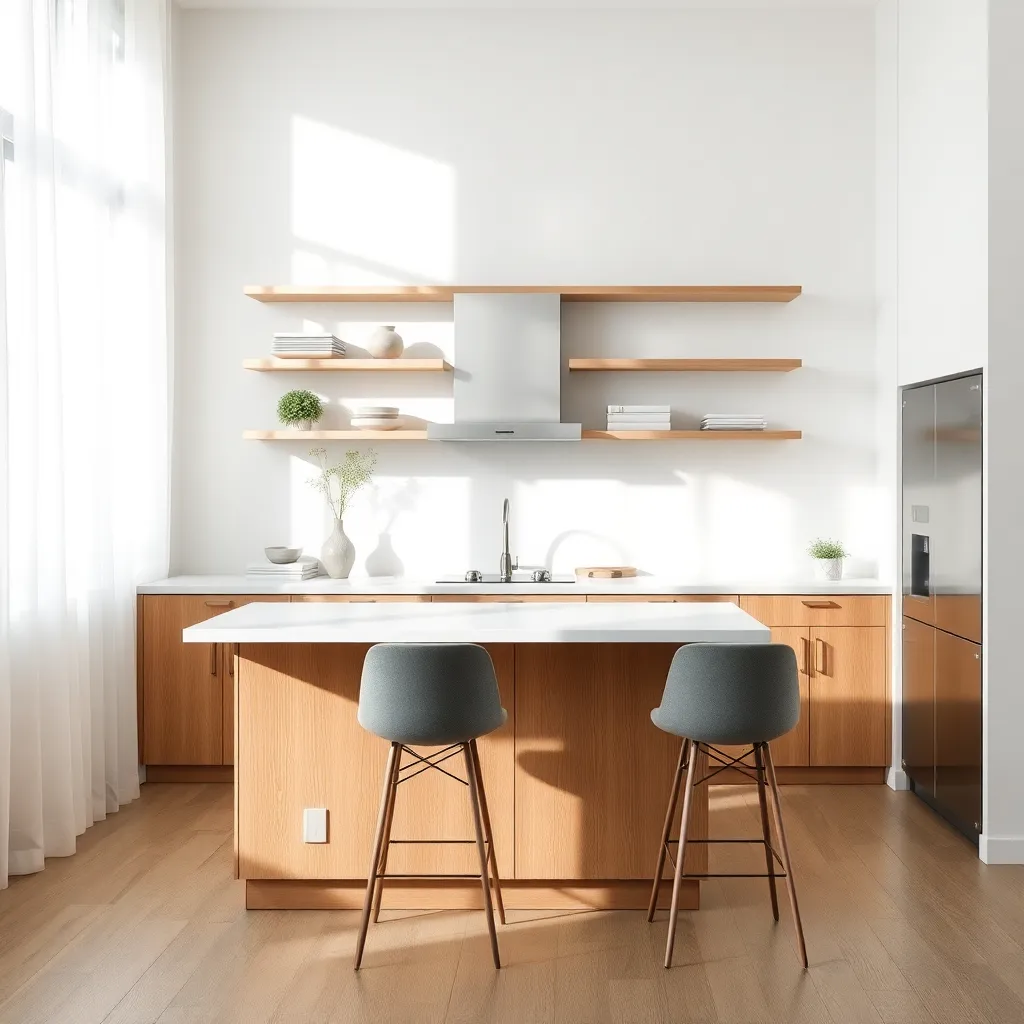
Minimalist styling in open shelving focuses on achieving a clean and clutter-free environment. Begin by selecting shelves with simple lines and neutral colors, such as white or light gray, to create a calming backdrop for your items.
Arrange your items with intention, using the rule of threes to maintain visual balance—group objects in sets of three for a harmonious look. Incorporate a mix of textures by combining materials like ceramic, glass, and wood to add depth without overwhelming the space.
When decorating your shelves, choose items that serve both an aesthetic and functional purpose. For instance, opt for sleek storage boxes to hide small items, while displaying a few curated pieces like a vase or a small sculpture to maintain a minimalist aesthetic.
To add a touch of color, consider using natural elements such as potted plants or succulents, which can provide a refreshing contrast against the neutral tones. Ensure that each piece on your shelves is meaningful, allowing you to create a personalized yet uncluttered display.
Contrasting Backdrops (Enhanced Depth Perception)
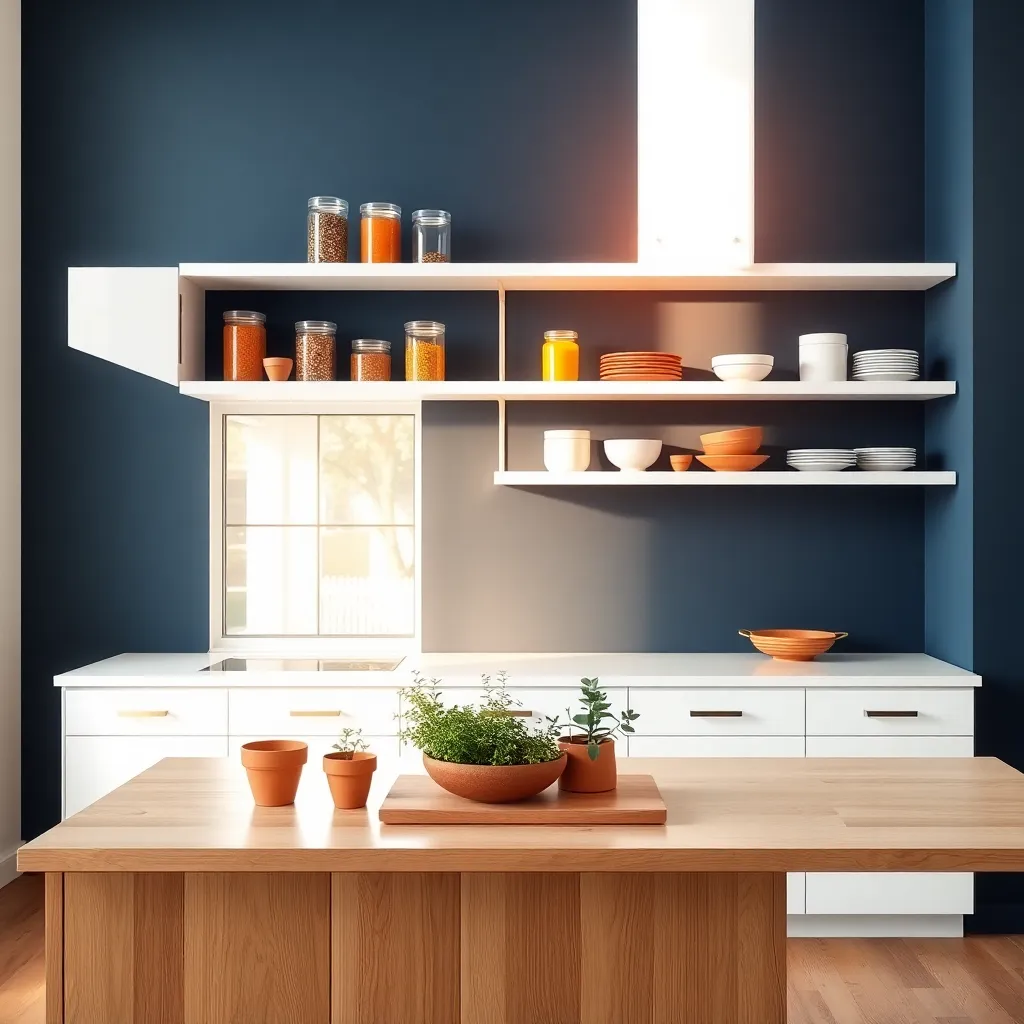
Creating a contrasting backdrop for your open shelving can dramatically enhance the depth perception of your space. To achieve this, consider painting the wall behind your shelves a bold color, like navy blue or forest green, which will make lighter items stand out more prominently.
For a more textured look, using wallpaper or a mural as a backdrop can add an artistic flair. Choose patterns that complement your overall room design without overwhelming the items on the shelves.
The key to mastering this technique is ensuring your shelf contents are well-coordinated with the backdrop. Pair dark backdrops with lighter, neutral-toned objects to create a balanced and eye-catching display.
Advanced decorators might experiment with materials like metal or glass for shelving to further enhance the contrast. These materials can reflect light, adding both shine and visual interest to your setup.
Seasonal Decor Swaps (Adaptable Ambiance)
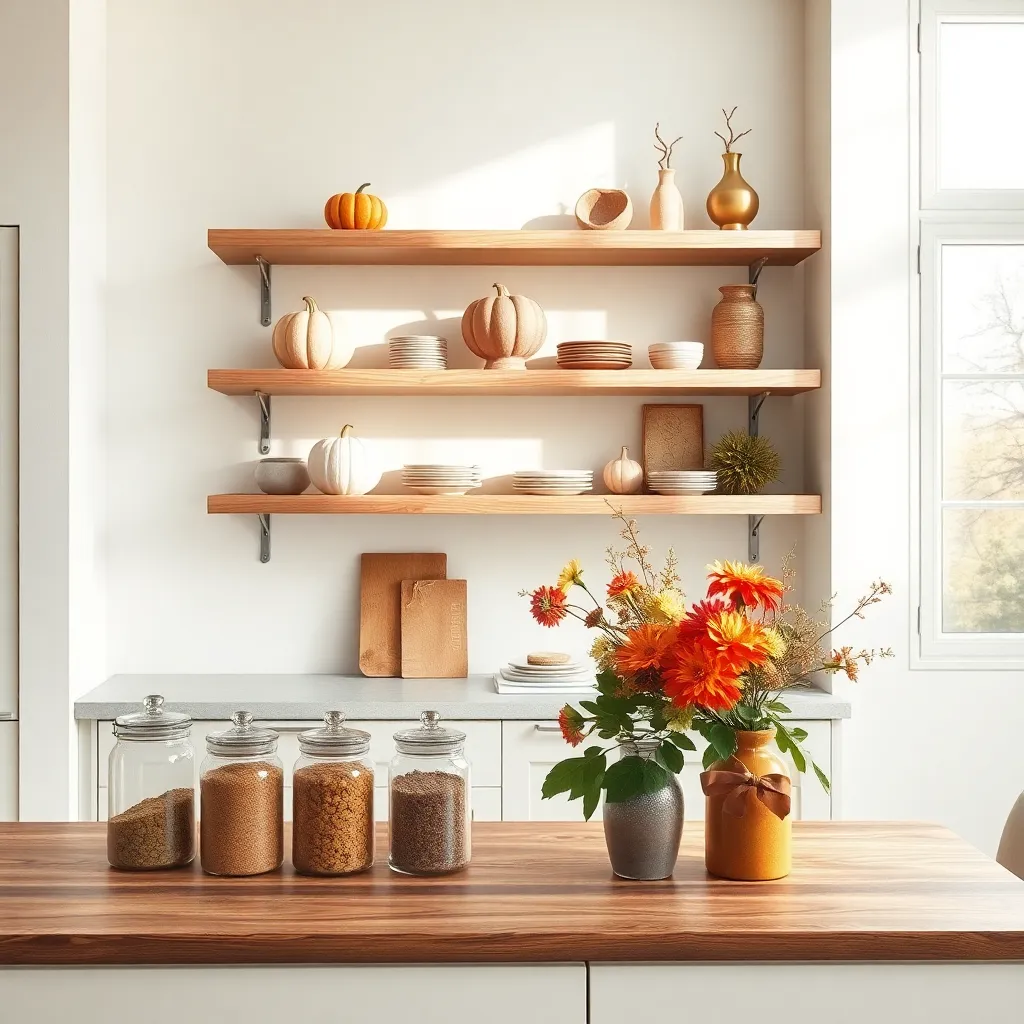
One way to keep your open shelving lively and engaging throughout the year is by implementing seasonal decor swaps. Start by selecting a neutral color palette as your base, allowing you to easily swap out seasonal elements like small vases, figurines, or framed art without clashing with the overall aesthetic.
Consider incorporating natural elements that reflect each season, such as pinecones in winter or fresh flowers in spring. These elements not only add visual interest but also bring a touch of the outdoors inside, enhancing the ambiance of your space.
To keep your shelves looking fresh and inviting, rotate your decorative pieces every few months. In summer, opt for light and airy items like sea glass bottles or woven baskets to evoke a coastal feel, while autumn might call for warmer tones and textures.
For an advanced technique, consider adjusting the lighting around your shelves to complement the seasonal decor. Use warm-toned LED lights to highlight autumn displays or soft, cool lighting to enhance a winter wonderland theme, creating a cohesive and adaptable ambiance in your home.
Functional Sculptures (Art Meets Utility)
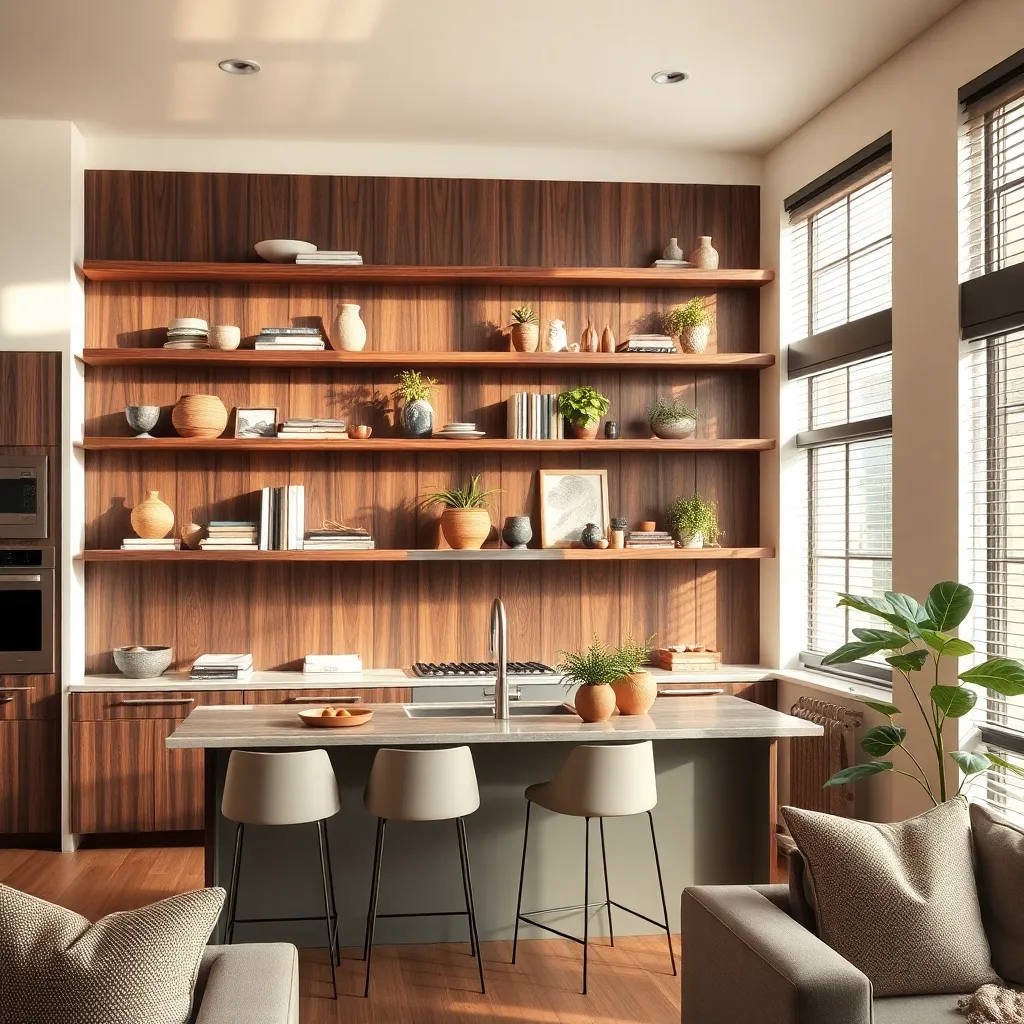
Incorporating functional sculptures into your open shelving design can elevate your space by blending art with utility. Choose pieces that serve a dual purpose, such as bookends shaped like abstract forms or vases with unique contours, to add artistic flair while maintaining practicality.
To make the most of this concept, focus on material selection that complements your existing decor. Opt for sculptures in materials such as marble, wood, or metal, which not only offer durability but also provide a tactile contrast against softer elements like textiles or glassware.
Consider strategic placement on your shelves to balance aesthetics and function, ensuring each piece contributes to the overall harmony of the space. Position these sculptures at varying heights and pair them with books or small plants to create a dynamic visual rhythm.
Advanced decorators can experiment with color schemes that highlight or contrast with the sculptures. Choose pieces in bold hues to create a focal point or in subtle shades to blend seamlessly with your existing palette, enhancing the room’s mood.
Textured Baskets and Bins (Stylish Storage Solutions)
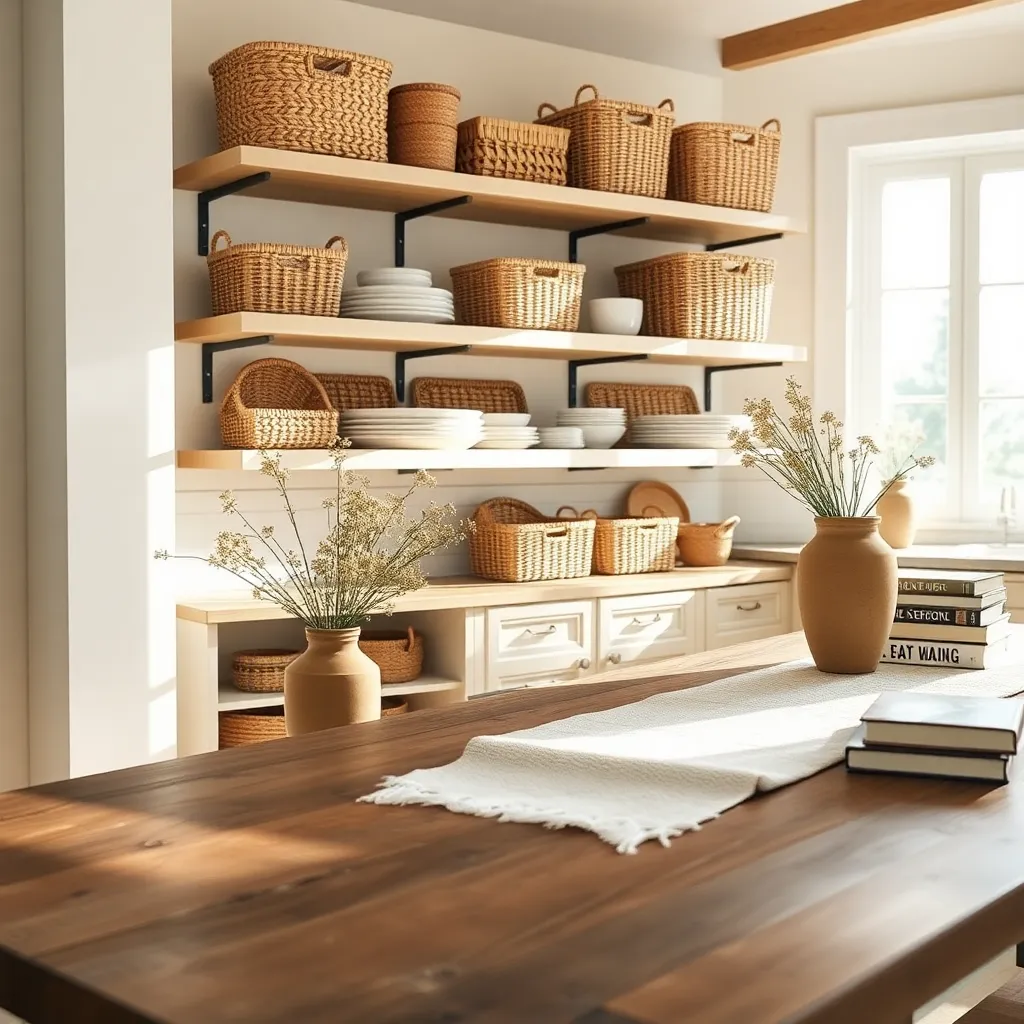
Embracing textured baskets and bins on open shelves offers a stylish solution for organizing clutter while adding a touch of sophistication. Choose materials such as seagrass, jute, or woven cotton that bring warmth and texture to any room, enhancing the visual appeal of your shelving.
Consider the size and shape of baskets to ensure they fit seamlessly onto your shelves. Opt for a mix of sizes—small bins for compact items like keys and larger baskets for bulkier items like blankets or magazines—to maximize both practicality and aesthetics.
Incorporating a consistent color palette across your baskets can create a cohesive look. Neutral tones like beige, gray, and white are versatile and can complement various styles, while a pop of color can add vibrancy and interest to the space.
For those who want to add a personal touch, consider labeling your baskets for easy access and organization. Use simple tags or chic labels to enhance functionality while maintaining a neat and tidy appearance, making it easy to find what you need when you need it.
Floating Shelf Variations (Modern Elegance)
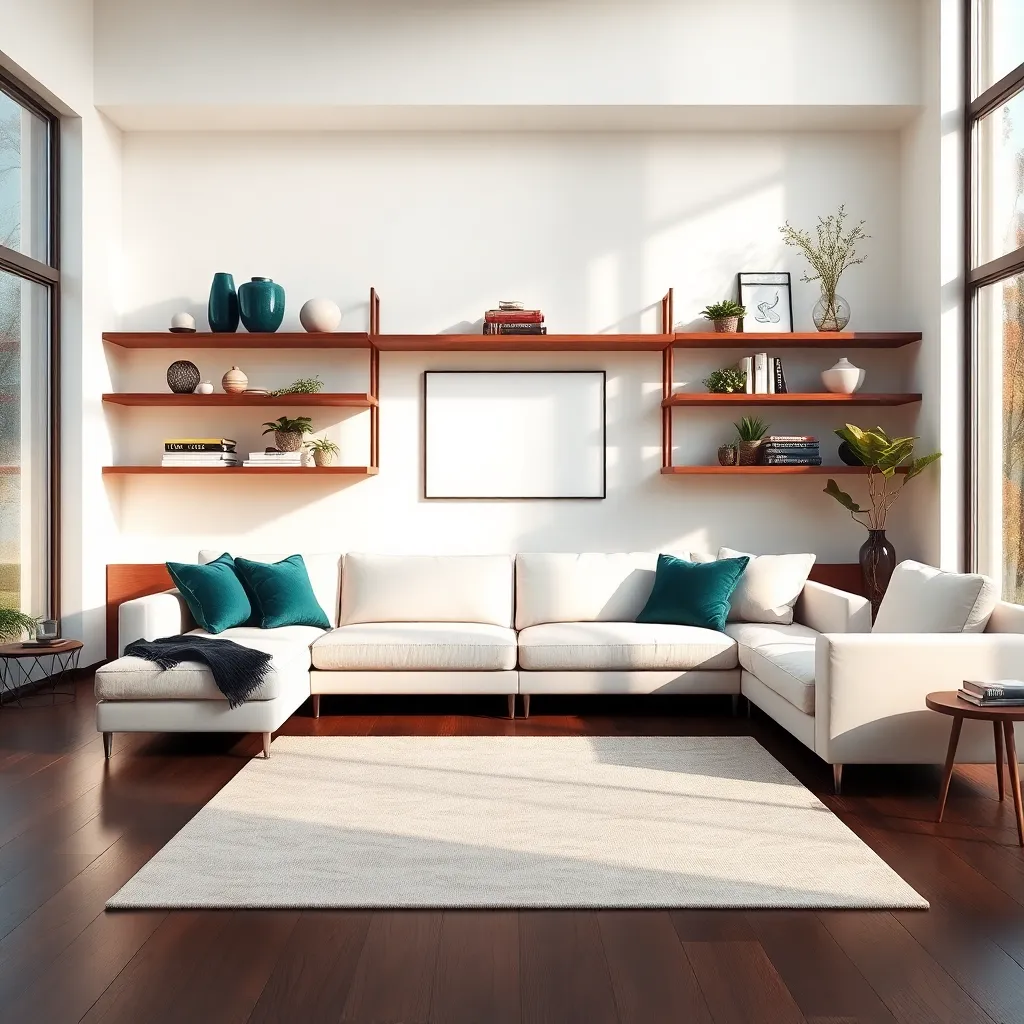
Floating shelves offer a sleek and modern way to display your favorite items while maintaining a minimalist look. To create a sense of modern elegance, consider using shelves made from materials like glass, metal, or high-gloss wood, which can add a touch of sophistication to any room.
Positioning floating shelves at varying heights can break the monotony and add visual interest to your walls. This technique works particularly well in living rooms or bedrooms, where you can showcase a mix of decorative items and functional pieces like books or plants.
For a cohesive look, match the color of your floating shelves with other elements in the room, such as the frame of your artwork or the finish of your lighting fixtures. Choose a neutral palette like black, white, or grey for a timeless appeal, or go bold with a pop of color to make your shelves the focal point of the room.
If you’re looking to add an advanced touch, consider integrating LED strip lighting beneath the shelves. This subtle lighting can enhance the display items and create a warm ambiance, especially in the evening. Installing these lights is relatively simple and can elevate the overall aesthetic of your shelving display.
Conclusion: Growing Success with These Plants
In exploring the ‘Top 12 Open Shelving Design Ideas,’ we’ve uncovered a treasure trove of relationship insights. These design concepts reflect the importance of maintaining openness, adaptability, and creativity in our connections. From the simplicity of minimalism to the eclectic charm of mixing styles, each idea highlights the beauty of balance and personalization in relationships. The use of different materials and colors teaches us about embracing diversity and harmony, while strategic placement and organization remind us to prioritize and cherish our shared spaces.
Now, take a moment to reflect on how these design principles can enhance your relational spaces. Consider reorganizing a shared area in your home or initiating a conversation that embraces these elements of openness and creativity.
Feel empowered to enrich your relationships by saving this article for future inspiration. Bookmark it as a reminder that with each design choice, you are fostering a deeper connection. As you integrate these insights, look forward to a future where your relationships are as vibrant and enduring as the most thoughtfully designed space. Embrace this journey of growth and transformation, knowing that your relationships will flourish with each thoughtful action you take.
